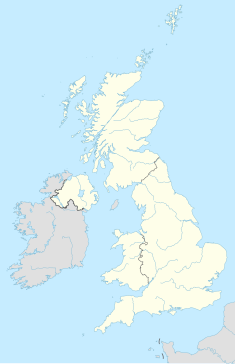|
Lochwood Tower
Lochwood Tower, also known as Lochwood Castle, is a ruined 16th-century L-plan tower house situated in Annandale (Valley of the River Annan) about 6 miles (9.7 km) south of the town of Moffat in the modern county of Dumfries and Galloway, Scotland.[1][2][3] It was the seat of the Clan Johnstone. HistoryThe Johnstones held the property from the 14th century, and it was their main stronghold. In 1643, the family were created Earls of Hartfell, and in 1660, Earls of Annandale. The second Earl of Annandale and Hartfell, was created Marquess of Annandale in 1701.[1] The English captured the tower in 1547, during the Rough Wooing, and held it until 1550.[1] They described it as 'a fair large tower, able to lodge all our company safely, with a barmkin, hall, kitchen and stables, all within the barmkin…'.[2] Edward Seymour, 1st Duke of Somerset, the English commander, wrote,
The Maxwells and Armstrongs burnt it in 1585.[5] It was rebuilt, and James VI of Scotland and Ludovic Stewart, 2nd Duke of Lennox stayed on 11 October 1592.[6] The castle was abandoned around 1724.[1] StructureLochwood Tower, a Motte-and-bailey castle overlain by a later stone castle, lies on the east of a promontory about 600 metres (2,000 ft) long and 400 metres (1,300 ft) wide, which thrusts northwards into an area of largely-unreclaimed moss.[2] The tower, which was once a strong castle, incorporates some 15th-century work. Not much remains above the level of the vaulted basement. There was a courtyard contained by a wall, which contained the kitchen and other buildings.[1] The hall would have been on the first floor of the main block, with private chambers above. The entrance, which led to a wide turnpike stair, was in the wing.[1] On the north was a hillock 'apparently in part artificial' named 'The Mount', a circular double-terraced motte with ramparts, apparently a Norman predecessor of the stone tower. To the south of the tower, in the centre of a level meadow which was probably the garden, was an artificially-looking, ditched earthen mound, some 9 feet (2.7 m) high and 36 feet (11 m) to 40 feet (12 m) across the base.[2] See alsoReferences
|
||||||||||||||||




